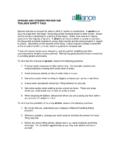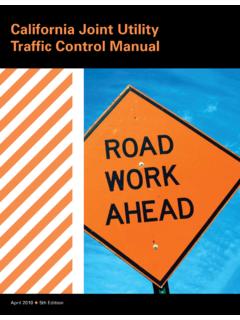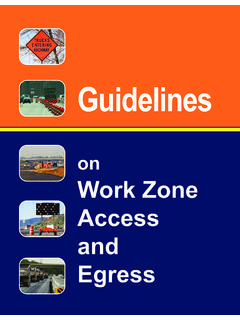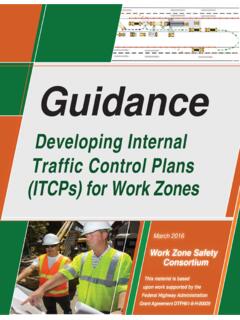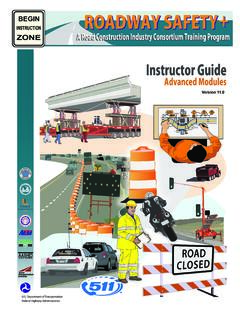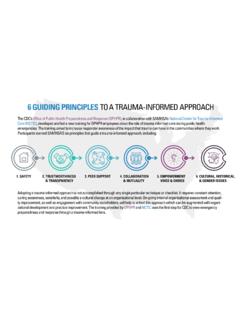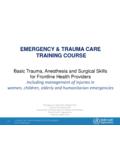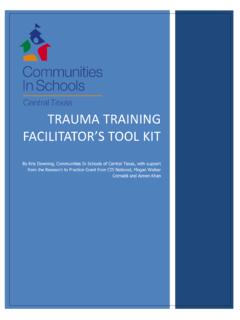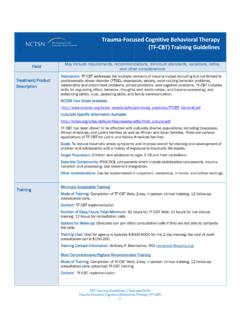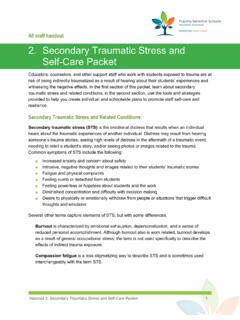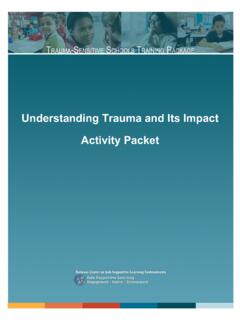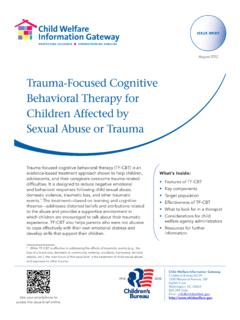Transcription of Preventing Suspension Trauma Fact Sheet
1 Preventing Suspension TraumaArresting a fall is only the first step in Preventing injury or death. Even if the arrest does not cause injury, a fallen worker can die from Suspension Trauma (orthostatic shock) if not rescued in time. Too often, a worker is saved by a personal fall arrest system (PFAS), only to succumb to Suspension Trauma while waiting for rescue. Suspension Trauma relief straps: A fallen worker can deploy Trauma relief straps, creating a loop that the worker steps into and presses against to stand up. Relief straps are typically packaged in two pouches that attach to each side of a harness. Everyone who works at heights must be fully trained in fall protection. training should include PFAS rescue and first aid/CPR. Planning and Preparation Many safety managers, superintendents, and foremen assume their job is done if they limit total PFAS arresting force to 1,800 pounds and prevent impact injury during a fall.
2 Unfortunately, post-fall Suspension Trauma and the time needed for rescue are often left out of fall protection plans. For a fallen worker awaiting rescue, Suspension Trauma can become a life-threatening emergency if not handled properly. Therefore, a fall protection plan should always include a plan for Trauma happens when a fallen worker is suspended in a harness with legs hanging. Whilearteries near the fronts of the legs continue pumping blood, the harness straps act like tourniquets on the veins in the backs of the legs and prevent used (deoxygenated) blood returning to the heart. If circulation is impeded enough, the heart rate will abruptly slow and reduce oxygen to the Is Suspension Trauma ?Even under ideal circumstances, with a rescue plan in place, Suspension Trauma must be treated as an emergency. It can be fatal in as little as 10 minutes. Typically, Suspension Trauma causes death in 15 to 40 best way to slow progression of Suspension Trauma is to stand.
3 When a worker stands, the leg muscles must contract, which puts pressure on the veins. This pressure, along with a series of one-way valves within the veins, helps blood return to the heart and reduces the amount of blood pooling in the legs. A fallen worker can stand in one of several ways:Immediate Steps to Reduce the Risk of Suspension TraumaOnsite work equipment: The onsite rescue team may be able to bring a ladder, an aeriallift, or other equipment for the suspended worker to stand on. Structural member: The onsite rescue team may be able to pull the suspended worker over to a structural member, a lower level, or the ground. Suspension Trauma relief straps, self-rescue devices, and/or technical rescue equipment for assisted rescue by trained onsite workers. This may include pulley systems, brake-tube systems, winch systems,controlled descent devices, rope ladders, or other devices.
4 Relief StrapsHands-On TrainingA specific rescue plan must be developed for each jobsite. The supervisor should assign duties, such as who calls 911 and who performs the supervisor should evaluate in advance how onsite work equipmentcould be used. Employers should also provide specialized equipment: VeinsArteriesThis material is based on work supported by the Federal Highway Administration under Grant Agreement No. opinions, findings and conclusions or recommendations expressed in this publication are those of the author(s) and do not necessarily reflect the view of the Federal Highway Administration. This publication does not constitute a national standard, specification, or Work Zone Safety ConsortiumAmerican Road and Transportation Builders AssociationNational Asphalt Pavement Association International Union of Operating Engineers Community College Consortium For Health and Safety training Department of Transportation Federal Highway AdministrationTexas A&M Transportation InstituteFOF Communications American Association of State Highway and Transportation Officials Employers must plan for and practice fall rescue.
5 Even if self-rescue is the primary plan, a fallen worker may not be able to perform self-rescue, so all workers using PFAS must be trained and prepared to perform assisted rescue. The RescuePreventing Suspension Trauma (continued)Whether or not the suspended worker has lost consciousness, the rescue team must be careful in handling the victim. Post-rescue death is caused by the heart s inability to tolerate the abruptly increased flow of carbon dioxide-saturated blood from the legs. Do not put a rescued worker in a horizontal position whether conscious or not. If the rescued worker does not have any apparent injuries from the fall, the worker should be placed in a sitting position with knees close to the chest. The position is often called a W position. The fall victim should remain in the W position for at least 30 minutes to prevent the oxygen-deprived blood returning to the heart suddenly.
6 When Emergency Medical Services (EMS) arrive onsite, ensure that they know to treat the rescued worker for possible Suspension Trauma . Inform them how long the worker was suspended. Before a FallAfter a FallReferences1. Illinois Region VII EMS, Emergency Medical Services, an alliance of six EMS Systems with nearly 5,000 EMS providers. A PowerPoint presenta on for EMS responders can be downloaded at h Department of Labor, Occupa onal Safety and Health Administra on, Safety and Health Informa on Bulle n on Suspension Trauma . h Robertson, David. Orthosta c Intolerance. Vanderbilt University, Nashville, Tennessee. h 4. Seddon, Paul. Harness Suspension : Review and evalua on of exis ng informa on. Health and Safety Execu ve. h 5. Weems, Bill and Bishop, Phil. Will Your Safety Harness Kill You? Electronic Library of Construc on Occupa onal Safety & Health (elcosh).
7 H personnel should be trained that Suspension in an upright condition for longer than 5 minutes can be fatal. Workers should receive hands-on training on hanging in a harness and should try to get their legs as high as possible and their heads as close to horizontal as possible. Workers should not be permitted to work alone in a harness. Workers should be trained to try to move their legs in the harness and try to push against any footholds. Workers should have a way to signal for help, such as a whistle. The rescue plan and training should ensure that rescue of a fall victim happens in less than 5 minutes. Suspended workers should try to move their legs in the harness and try to push against any footholds, such as relief staps. If the worker is suspended upright, emergency measures must be taken to remove the worker from Suspension or move the fallen worker into a horizontal posture or at least to a sitting position prior to the rescue.
8 Rescuers must be aware that post-rescue death may happen if a victim is moved too rapidly to a horizontal position. Moving a worker too quickly to a horizontal position is likely to allow a large volume of used (deoxygenated) blood to move to the heart, causing cardiac arrest. Suspended workers should try to get their legs as high as possible and their heads as close to horizontal as possible. Rescuers must be aware of the first aid measures to prevent Suspension Trauma . Onsite work equipment should be evaluated for potential use in a fall rescue. Harnesses should be selected for the specific job application and must consider design, compliance, convenience of use, fit, potential arrest injury, and Suspension Trauma . A Sample Fall Rescue Plan is available from : Stryker EMS.
